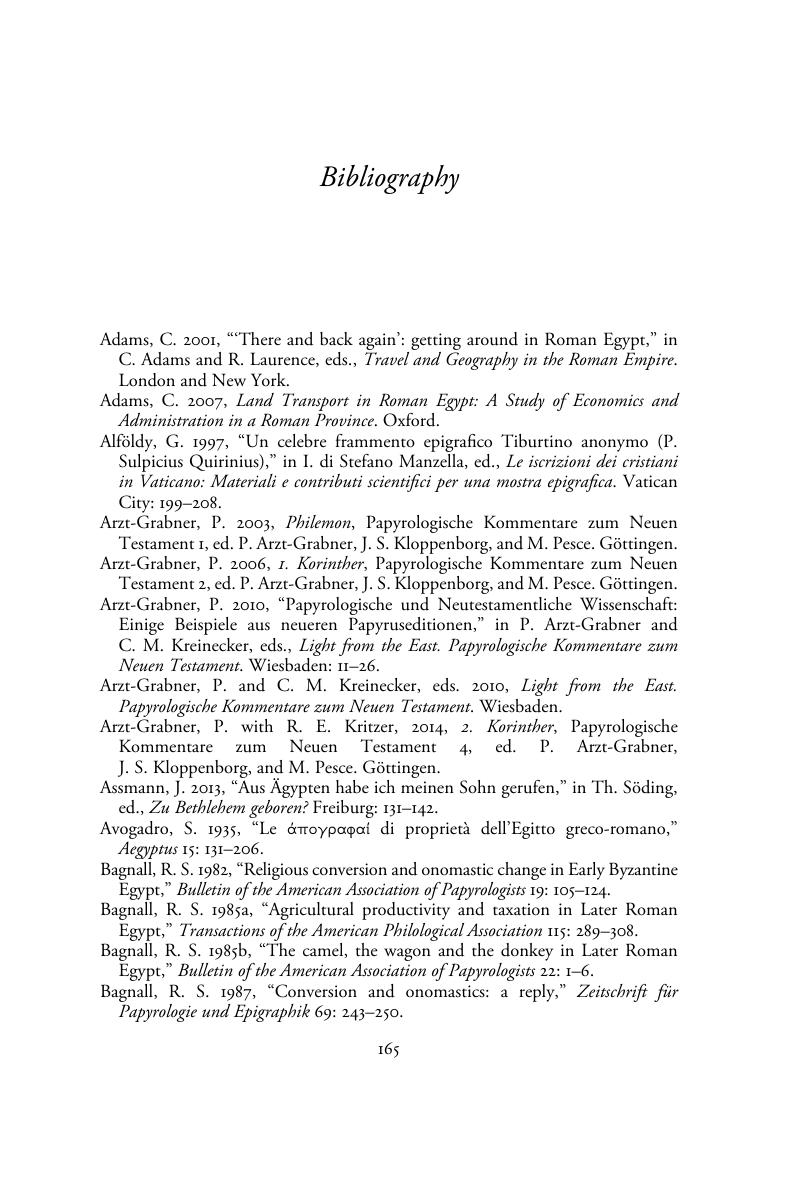Book contents
- Papyri and the Social World of the New Testament
- Papyri and the Social World of the New Testament
- Copyright page
- Dedication
- Contents
- Illustrations
- Acknowledgments
- Maps
- Chapter I Egypt and the Social World of the New Testament
- Chapter II The Social Milieu of Early Christians in Egypt
- Chapter III “In those days a decree went out …”
- Chapter IV “But these words seemed to them an idle tale”
- Chapter V “The Carpenter’s Son”
- Chapter VI “In those days Mary set out …”
- Chapter VII “In that region there were shepherds living in the fields …”
- Chapter VIII Afterword
- Notes
- Bibliography
- Index Locorum
- General Index
- References
Bibliography
Published online by Cambridge University Press: 08 July 2019
- Papyri and the Social World of the New Testament
- Papyri and the Social World of the New Testament
- Copyright page
- Dedication
- Contents
- Illustrations
- Acknowledgments
- Maps
- Chapter I Egypt and the Social World of the New Testament
- Chapter II The Social Milieu of Early Christians in Egypt
- Chapter III “In those days a decree went out …”
- Chapter IV “But these words seemed to them an idle tale”
- Chapter V “The Carpenter’s Son”
- Chapter VI “In those days Mary set out …”
- Chapter VII “In that region there were shepherds living in the fields …”
- Chapter VIII Afterword
- Notes
- Bibliography
- Index Locorum
- General Index
- References
Summary

- Type
- Chapter
- Information
- Papyri and the Social World of the New Testament , pp. 165 - 182Publisher: Cambridge University PressPrint publication year: 2019

